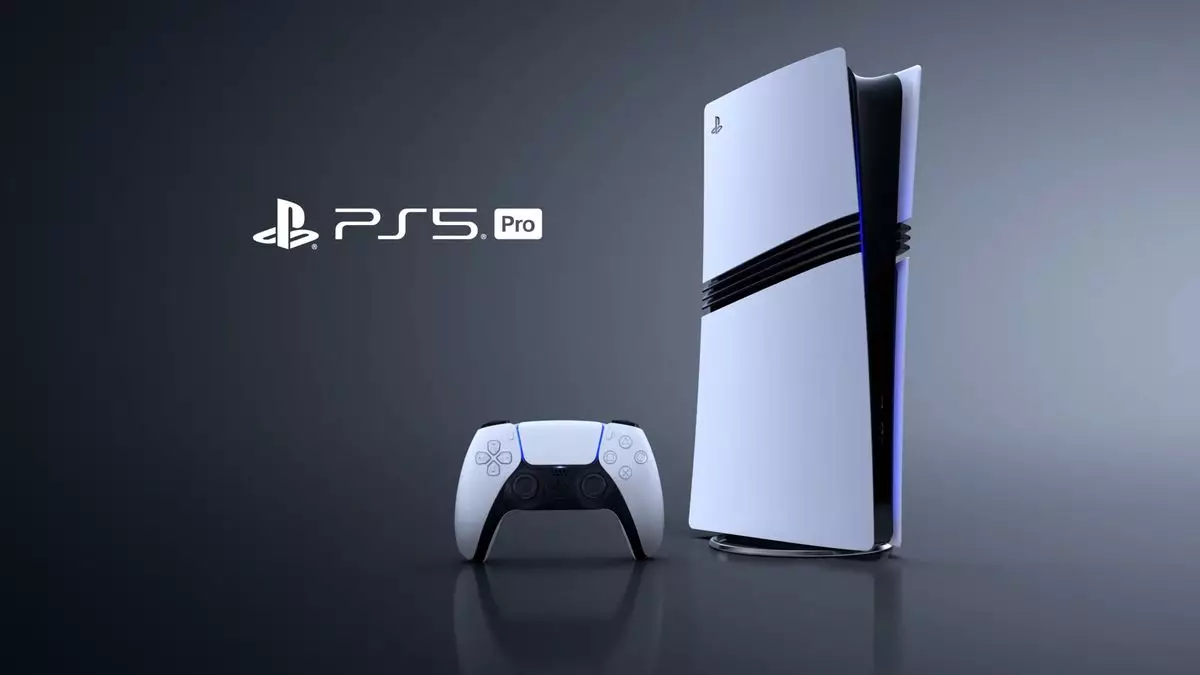The gaming industry has witnessed remarkable advancements over recent years, particularly in the realm of graphics and performance enhancements. One notable development has been the integration of artificial intelligence (AI) in graphics upscaling, allowing for improved visuals and smoother gaming experiences. However, a pivotal move has emerged from Sony, sparking discussions about the future of AI technology within the gaming landscape. By opting to develop its own AI hardware rather than relying on existing AMD technologies, Sony is setting out not only to enhance its PlayStation consoles but also to redefine expectations of what gaming graphics can achieve.
Artificial intelligence is revolutionizing not just how games look but also how they are played. At the core of this transformation is machine learning (ML), a subset of AI that utilizes complex mathematical calculations to create more realistic graphics and seamless gameplay. For instance, graphics upscaling techniques such as Super Resolution leverage ML algorithms to enhance lower-resolution images, resulting in sharper visuals without compromising on performance. Here, Sony has chosen to take a divergence from the traditional route, aiming instead for a proprietary solution tailored specifically to its consoles, starting with the anticipated PS5 Pro.
Mark Cerny, Sony’s lead architect for the PlayStation consoles, elaborated on the firm’s strategic choices during the development of the PS5 Pro. The discussion underscored the monumental decision to either integrate a dedicated Neural Processing Unit (NPU) or enhance the existing GPU architecture for ML performance. Ultimately, Sony opted for the latter, emphasizing the commitment to creating custom solutions instead of licensing generic technologies. Cerny noted, “Once you’re licensing technology, that’s what you’re doing forever,” showcasing a long-term vision for the PlayStation brand that prioritizes control over technological development.
This approach signified a four-year journey, showcasing not only the technical aspirations of Sony but also the desire to foster innovation through proprietary methods. By integrating a model capable of achieving 300 trillion operations per second, comparable to contemporary offerings from Nvidia, Sony is positioning itself at the forefront of the AI-driven graphics revolution.
To realize this ambitious project, Sony modified AMD’s RDNA 2 architecture by introducing specialized enhancements. Understanding the challenges tied to matrix math, which is particularly bandwidth-demanding, proved crucial. Without these adaptations, the matrix math component would struggle to operate optimally within the existing system. Sony’s engineering team devised a novel on-chip memory solution and tiling algorithms that functioned to maximize the potential of the GPU while minimizing reliance on external memory systems.
This innovative approach not only reflects Sony’s technical acumen but also sets a new precedent for how gaming hardware can evolve to meet demanding applications of modern graphics technology. By utilizing vector registers for enhanced memory performance, Sony redefined its architecture for advanced processing capabilities—demonstrating that even established paradigms can yield new possibilities through concerted engineering efforts.
With the introduction of its new PlayStation Spectral Super Resolution (PSSR) technology, Sony is now in direct competition with notable names like Nvidia’s DLSS and Intel’s XeSS. This escalation in the competitive landscape is indicative of a broader shift within the industry. As companies strive for supremacy, the necessity for sophisticated AI-driven graphics becomes abundantly clear. Cerny’s reflections on the developmental journey underscore the potential benefits of concentrating on in-house technology, and how this decision has emboldened Sony to enhance its graphical capabilities significantly.
Conversely, it raises questions about the future of AMD’s AI capabilities, particularly regarding its RDNA architecture, which still lacks dedicated ML hardware. Given that Nvidia and Intel continue to push boundaries with integrated AI, AMD’s inability to keep pace could signal hurdles ahead. Sony’s decision to craft its custom architecture not only serves as a strategic advantage but may also compel AMD to accelerate the development of its own solutions.
Sony’s journey toward developing proprietary AI hardware represents a landmark decision that could significantly alter the course of gaming graphics. By prioritizing innovation through tailored technological advancements, the company aims to set new benchmarks in game performance and visual fidelity. As more players enter the field of AI-enhanced gaming technology, Sony’s commitment to crafting bespoke solutions emphasizes the importance of adapting to industry demands. Moving forward, the evolution of graphics technology promises to deliver increasingly immersive experiences, further blurring the line between the virtual and the real. Through its bold decisions, Sony not only seeks to capture market share but also strives to lead the way for future advancements in the gaming industry.

